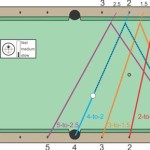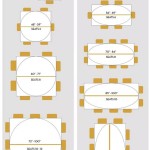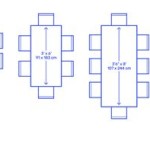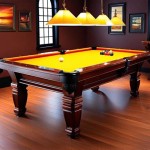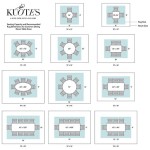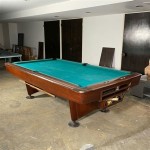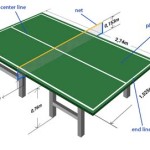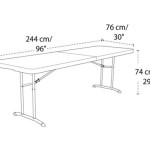Table Tennis Table Size: A Comprehensive Guide in Centimeters
Table tennis, also known as ping-pong, is a globally recognized sport enjoyed by individuals of all ages and skill levels. A crucial aspect of the game is the playing surface: the table. Understanding the precise dimensions of a standard table tennis table is essential for both recreational players and competitive athletes. These dimensions are meticulously regulated by the International Table Tennis Federation (ITTF) to ensure fair play and consistency across all levels of competition.
This article provides a detailed exploration of the standard table tennis table size, primarily focusing on measurements in centimeters (cm). It will delve into each dimension, explain the rationale behind the specifications, and discuss the impact these dimensions have on gameplay. Further, it will briefly cover tolerance levels and specific markings required on the table surface.
Official Table Dimensions in Centimeters
The ITTF dictates precise measurements for a regulation table tennis table. These specifications are designed to create a standardized playing field that allows for accurate shots, predictable ball behavior, and an overall consistent playing experience regardless of location. The following dimensions represent the globally accepted standards for table tennis tables used in both recreational and competitive settings.
Length: A standard table tennis table is 274 cm long. This length provides sufficient space for players to execute a wide range of strokes, from short pushes to powerful drives and smashes. The length ensures that players have adequate distance to react to incoming shots and position themselves effectively for their own returns.
Width: The standard width of a table tennis table is 152.5 cm. This dimension balances the need for a wide enough playing area to allow for angled shots and lateral movement with the requirement of maintaining a manageable table size for various playing environments. The width contributes significantly to the strategic aspects of the game, demanding precise shot placement and tactical maneuvering.
Height: The height of the table, measured from the floor to the top surface, is 76 cm. This height is designed to facilitate comfortable play for individuals of varying heights and allows for a consistent ball bounce, which is critical for executing various strokes and strategies. The height is universally applied to ensure that all players have equal opportunity to perform optimally.
Rationale Behind the Standard Dimensions
The specified dimensions of a table tennis table are not arbitrary. They are the result of extensive research, testing, and refinement over decades to optimize the playing experience. Each dimension plays a critical role in influencing the dynamics of the game. The interplay of length, width, and height dictates the speed, spin, and trajectory of the ball, thereby shaping the strategies employed by players.
The chosen length provides an adequate distance for both aggressive and defensive play styles. Players who prefer to attack have enough room to generate power for their shots, while defensive players have sufficient space to retreat and retrieve deep shots. The width necessitates precise shot placement. Players must consider angles and lateral ball movement to effectively outmaneuver their opponents.
The established height of the table, paired with the ITTF-approved net height, produces a specific ball bounce that challenges the players' ability to react accordingly. With the designated height, players must quickly adjust to the incoming balls, and strategically plan their returns. It promotes consistency in table tennis matches worldwide, and contributes to a level playing field by ensuring a unified ball bounce across all matches.
The current dimensions have been carefully selected to encourage a diverse range of playing styles and strategies. They create a dynamic and engaging game that rewards both technical skill and tactical awareness.
Markings and Surface Requirements
In addition to the overall dimensions of the table, specific markings and surface characteristics are crucial for competitive play. These elements further refine the playing surface to ensure fairness and accuracy.
Center Line: A white line, 3 mm wide, runs along the length of the table, dividing it into two halves. This line is relevant only in doubles play. It designates the service area for each player during the serve. The serve must bounce once in the server's right half of the table and then bounce once in the receiver's right half. The center line ensures that each player has a designated area to serve from and receive into.
Edge Lines: A white line, 2 cm wide, runs along each of the four edges of the table. These lines define the perimeter of the playing surface. A ball that lands outside these lines is considered out of bounds. The edge lines provide clear boundaries for the playing area and help to resolve disputes regarding whether a ball landed in or out.
Surface Uniformity: The table surface must be uniform in color and matte, providing a consistent bounce for the ball. The surface must be free of imperfections or irregularities that could affect the trajectory or spin of the ball. The ITTF stipulates that the surface should have a uniform coefficient of friction to ensure consistent ball behavior. This helps the players to anticipate the ball's movements and execute precise shots.
Color: The approved table color is generally dark green or dark blue. These colors provide good contrast with the white ball, making it easier for players to track the ball's movement. The dark color also reduces glare, which can improve visibility and concentration during play.
These markings and surface characteristics are essential for maintaining a consistent and fair playing environment. They help to eliminate ambiguity and ensure that all matches are played under the same standardized conditions.
Tolerance Levels and Manufacturing Considerations
While the ITTF specifies precise dimensions for table tennis tables, a certain degree of tolerance is allowed during manufacturing. This acknowledges the practical limitations of mass production and ensures that tables can be produced within acceptable limits without compromising the integrity of the game. The permissible tolerance levels are generally quite small, ensuring that any variations from the standard dimensions are minimal and do not significantly affect gameplay.
Manufacturers must adhere to strict quality control measures to ensure that their tables meet the ITTF's specifications and tolerance levels. These measures include precise cutting and assembly techniques, as well as rigorous testing to verify the dimensions and surface characteristics of the tables. The quality of the materials used in the construction of the table also plays a crucial role in ensuring its dimensional stability and durability.
Variations outside the allowable tolerance can impact the bounce of the ball and the overall consistency of the game. Therefore, it is important to purchase tables from reputable manufacturers who are committed to meeting the ITTF's standards. This guarantees that the table will provide a fair and enjoyable playing experience.
The ITTF regularly audits and approves table manufacturers to ensure compliance with its standards. Tables that meet the ITTF's requirements are typically marked with an official designation, indicating that they are approved for use in tournaments and official competitions.
Maintenance of the table is also important to ensure that it remains within tolerance levels over time. This includes avoiding excessive weight or pressure on the table surface, protecting it from extreme temperatures and humidity, and regularly cleaning it to remove dust and debris.
In conclusion, maintaining accurate dimensions of a table tennis table, measured meticulously in centimeters, is vital for the regulation and standardization of table tennis as a globally recognized sport. The ITTF's guidelines ensure consistent bounce and play, essential for fairness and competition. The dimensions and special markings found on table tennis tables are a standard for play and promote equitable matches.

Table Tennis Measurements Size And Dimensions Cornilleau

Table Tennis Dlgsc

To Choose The Right Table Tennis Size For You Stiga Sports

To Choose The Right Table Tennis Size For You Stiga Sports

Table Tennis Room Size Court And Dimensions

Ping Pong Table Dimensions Ponghero
To Choose The Right Table Tennis Size For You Stiga Sports

Table Tennis Tables Which Is Right For Me Hart Sport New Zealand

Table Tennis Buyer S Guide Liberty

Ping Pong Table Dimensions The Guy

